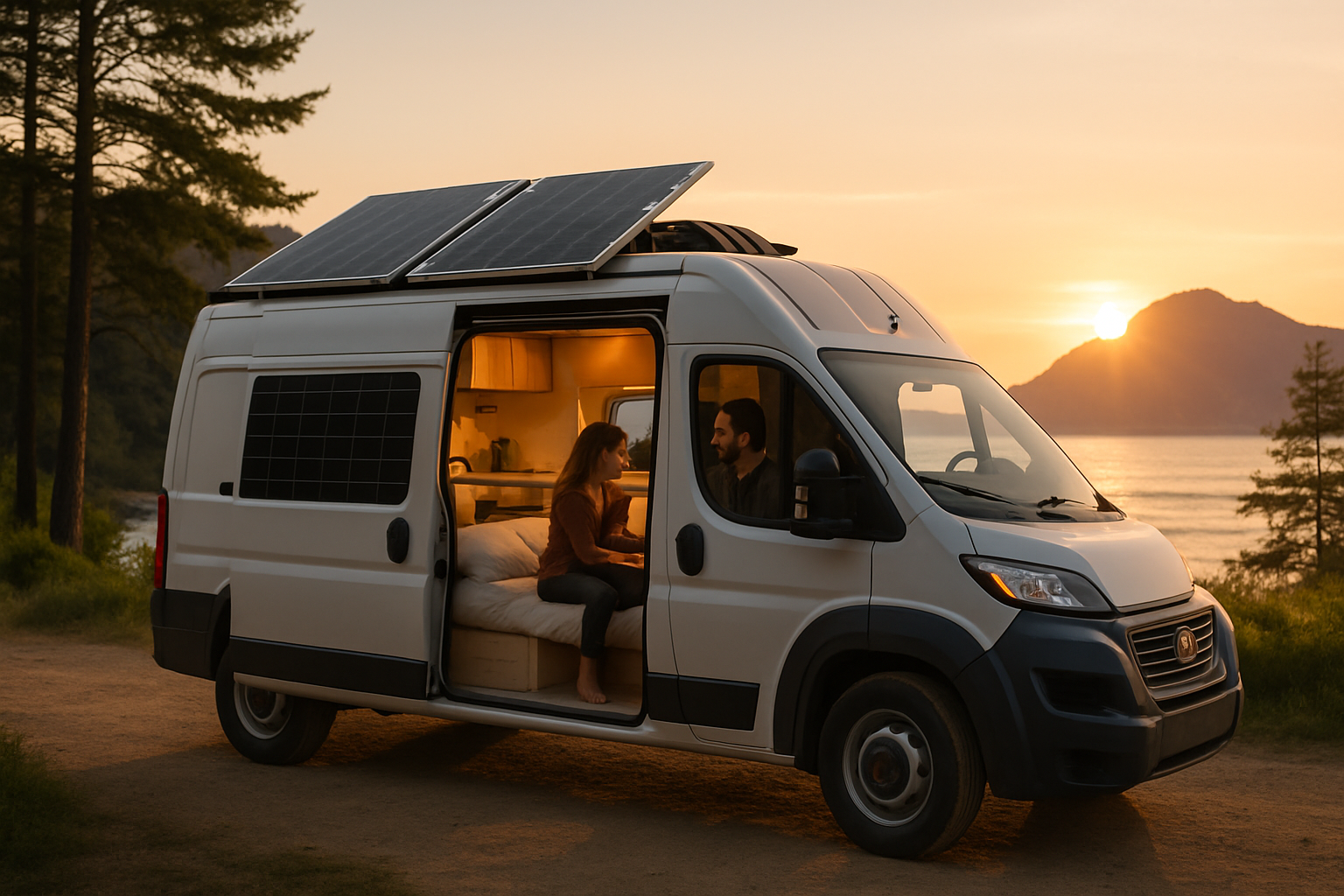Comprehensive Guide to Used Campervans Price Ranges
The used campervan market offers diverse pricing options depending on factors like age, condition, brand, and features. Whether you're seeking a budget-friendly weekend warrior or a fully equipped mobile home, understanding the various price ranges helps make informed purchasing decisions. From compact conversion vans starting around $20,000 to luxury motorhomes exceeding $100,000, the market caters to different budgets and lifestyle needs.

Comprehensive Guide to Used Campervans Price Ranges
Buying a used campervan represents a significant investment that requires careful consideration of multiple factors affecting pricing. The recreational vehicle market has experienced substantial growth, with used campervans offering an accessible entry point for outdoor enthusiasts and digital nomads alike. Market conditions, seasonal demand, and regional preferences all influence pricing structures across different vehicle categories.
Understanding Used Campervans Price Variations
Several key factors determine used campervan pricing in today’s market. Vehicle age typically creates the most significant price differential, with models under five years old commanding premium prices while older units offer substantial savings. Mileage plays a crucial role, as high-mileage vehicles often require more maintenance despite lower purchase prices. Brand reputation affects resale values, with established manufacturers like Winnebago, Airstream, and Mercedes-Benz Sprinter conversions maintaining stronger market positions.
Condition assessment involves examining both mechanical systems and interior amenities. Well-maintained vehicles with updated appliances, fresh upholstery, and recent mechanical service command higher prices than those requiring immediate repairs. Documentation of maintenance history and any modifications significantly impacts valuation.
Exploring Used Campervans Dealership in US and How to find the right price
The United States offers numerous avenues for purchasing used campervans, each with distinct pricing advantages. Authorized dealerships provide warranties and financing options but typically charge premium prices for their inventory curation and customer service. Independent RV lots often offer competitive pricing with more negotiation flexibility, though buyers assume greater responsibility for vehicle inspection and due diligence.
Private party sales through platforms like RVTrader, Facebook Marketplace, and Craigslist frequently offer the best prices but require extensive research and mechanical knowledge. Auction sites like Bring a Trailer and government surplus auctions can yield exceptional deals for knowledgeable buyers willing to accept higher risks.
Regional pricing variations reflect local demand patterns, with western states typically commanding higher prices due to outdoor recreation culture and proximity to national parks.
Current Used Campervans Model Range and Pricing Structure
The used campervan market encompasses several distinct categories with corresponding price ranges. Class B motorhomes, built on van chassis, typically range from $40,000 to $120,000 depending on age and features. Converted cargo vans offer the most affordable entry point, with basic conversions starting around $15,000 and professional builds reaching $80,000.
Truck campers provide another budget-friendly option, with used units ranging from $8,000 to $40,000 excluding the required pickup truck. Travel trailers designed for van towing expand options for those preferring separate tow vehicles, with prices spanning $10,000 to $60,000 for quality used units.
Luxury models from premium manufacturers command the highest prices, with late-model Airstream Interstate or Winnebago Revel units often exceeding $100,000 even in the used market.
Financing for Used Campervans Purchases its maintenance and budgeting tips
Financing used campervans requires understanding specialized recreational vehicle lending. Traditional auto loans typically don’t apply to RVs, necessitating RV-specific financing with different terms and requirements. Credit unions often provide competitive rates for members, while specialized RV lenders like Good Sam Finance and National Indoor RV Centers offer tailored programs.
Down payment requirements typically range from 10% to 20%, with loan terms extending up to 20 years for newer, higher-value units. Interest rates vary based on credit scores, loan amounts, and vehicle age, generally ranging from 4% to 12% for qualified buyers.
Budgeting for ownership extends beyond purchase price to include insurance, registration, maintenance, and storage costs. Annual maintenance typically costs 2-4% of vehicle value, while insurance ranges from $1,000 to $3,000 annually depending on coverage levels and usage patterns.
| Vehicle Type | Price Range | Popular Brands | Key Features |
|---|---|---|---|
| Basic Van Conversion | $15,000 - $35,000 | DIY, Peace Vans | Bed, basic kitchen, storage |
| Professional Conversion | $40,000 - $80,000 | Outside Van, Sportsmobile | Full amenities, warranty |
| Class B Motorhome | $50,000 - $120,000 | Winnebago, Roadtrek | Factory build, comprehensive systems |
| Truck Camper | $8,000 - $40,000 | Lance, Palomino | Compact, removable |
| Luxury Class B | $80,000 - $150,000 | Airstream, Mercedes | Premium materials, advanced tech |
Prices, rates, or cost estimates mentioned in this article are based on the latest available information but may change over time. Independent research is advised before making financial decisions.
Used Campervans Price Comparison Across USA Dealerships and other competitors
Price comparison across different sales channels reveals significant variations for similar vehicles. Dealership prices typically include reconditioning, limited warranties, and financing assistance but carry 15-25% premiums over private party sales. Online marketplaces like RVTrader and RV.com aggregate inventory from multiple sources, enabling efficient price comparison across regions.
Seasonal pricing patterns affect all sales channels, with spring and summer commanding premium prices as buyers prepare for camping season. Fall and winter purchases often yield 10-20% savings as sellers become more motivated and inventory accumulates.
Geographic arbitrage opportunities exist for buyers willing to travel, as vehicles in northern climates may show more wear but cost less than similar units in southern markets. Transportation costs must be factored into total acquisition expenses when considering distant purchases.
Successful used campervan purchasing requires balancing price considerations with quality assessment, financing options, and long-term ownership costs. Understanding market dynamics, seasonal patterns, and regional variations enables informed decision-making that maximizes value while minimizing risks associated with recreational vehicle ownership.




